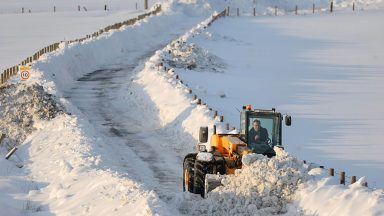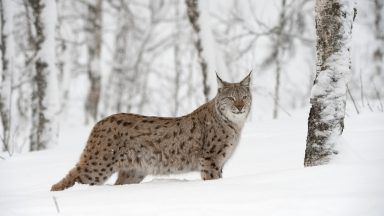The autumn equinox may now be behind us but there’s a reason why this season might be feeling more autumnal than normal.
If it seems like you have been noticing more acorns on the trees than normal that could be down to a “mast year”.
According to the Woodland Trust, mast years occur roughly every five to ten years and refer to years when certain species of trees and plants produce larger than normal crops of nuts and fruit.
The collective term for the fruits and nuts produced at this time of year is “mast”, giving rise to the year’s name.
One of the main theories as to why plants behave in this way is to control the population size of predators and ensure their own survival.
Producing less mast for several years ensures predators have less food to eat, and their population size dwindles.
The sudden boost to fruit and nut production means far more will be produced than can be eaten by the now much smaller population size of animals, thus ensuring at least some of the mast goes on to grow new plants.
The larger crop size comes at a cost to the tree however, stunting growth that year in favour of nut production.
Scientists are unsure exactly what causes all trees to overproduce in the same year, although some say the synchronicity points to environmental factors like weather or temperature.

Some scientists also say it can be hard to quantify when a mast year is occurring on account of the variation in crop sizes among the same species of trees.
One oak tree may naturally produce a very low amount of acorns and so, what by other trees’ standards may seem like a small increase, could indicate a mast year for an otherwise low-fruit-producing plant.
Ecologist and senior lecturer at Liverpool University Dr Andrew Hacket Pain said: “Oaks produce a similar number of flowers each spring, so the size of autumn’s acorn crop depends on how many of these flowers are able to mature into ripe acorns.
“It’s clear that spring weather conditions are important. When spring is warm and dry, pollination of oak flowers is very effective, and this results in a large crop of acorns.”

The Woodland Trust’s Nature’s Calendar project records are showing a provisional average fruit score of 4.1 for oak trees across the UK, using a scale of one being no fruit and five being an exceptional amount.
The Trust told ITV News this suggests 2025 will be a mast year for oak, “likely a result of the sunny, warm and dry April, which would have allowed good pollination conditions”.
It said last year’s average fruit score for oak in the UK was 2.6.
“Our highest ever average was 4.1 in 2013, so this year’s average has the potential to match 2013 in being a record high, but we won’t know that for sure until we have received all the data back from our volunteers.”
The Woodland Trust also noted this year saw a provisional average date for oak’s “first flowering” of April 17 – if this is confirmed, it would make it the earliest ever recorded.
The average date of the first appearance of buds, and the average date first leaves were seen, were also the earliest ever recorded – all of which contributed to a longer pollination period and a greater number of acorns.

Woodland Trust citizen science assistant Alex Marshall tracks the health of trees in the UK and said: “Almost every species event we record for Nature’s Calendar in spring (94 in total) was earlier than the benchmark this year, with some events breaking records as the earliest they’ve ever been, such as: the first recorded chiffchaff (a migratory species), first blue tit feeding young and first recorded orange-tip butterfly.
“Our only species event that was on average later than the benchmark year was first recorded bumblebee.”
In a plea to UK wildlife enthusiasts, Mr Marshall said more people are needed to help track the timings of nature and wildlife across the UK.
“Recording data of natural events each year can show us how wildlife is responding to changes in the weather so we can link it to extreme events like flooding or heat waves – which are becoming more and more frequent as the climate changes.
“The long-term dataset can also give us insights into how the timings of the events may be changing, and how wildlife is responding to climate change.”
Follow STV News on WhatsApp
Scan the QR code on your mobile device for all the latest news from around the country





























